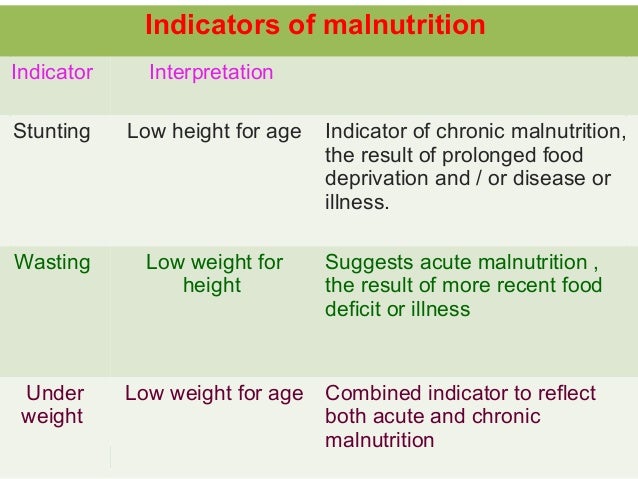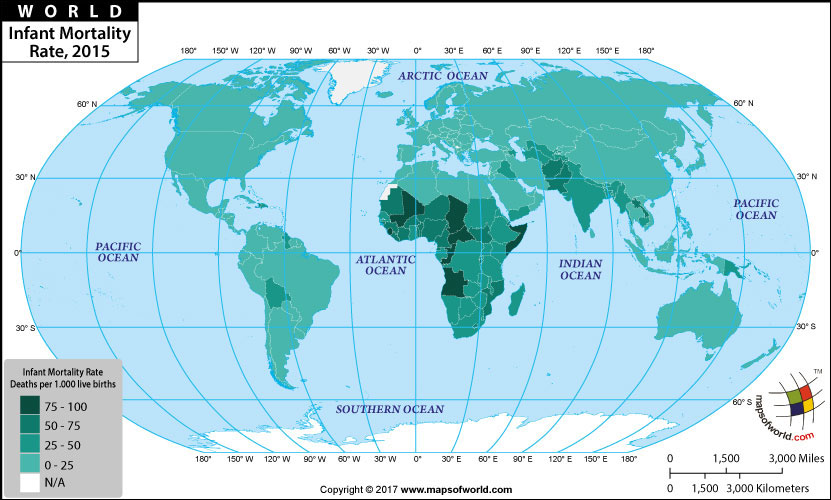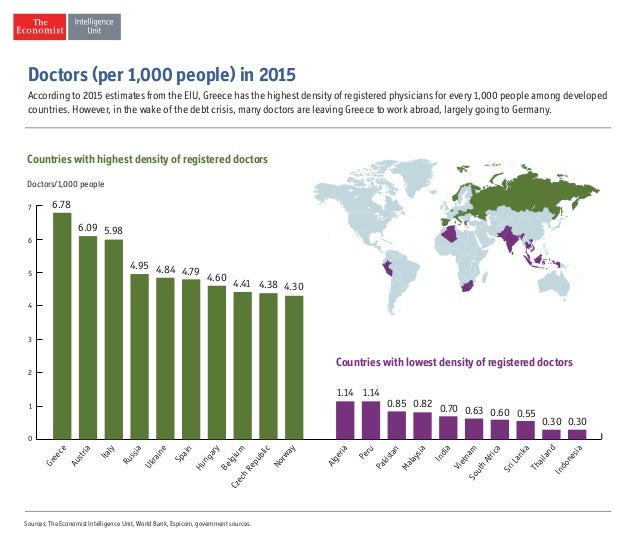Global patterns in food/nutrition indicators
The food security index
The Global Food Security Index (GFSI), launched in June 2012, is based on a quantitative and
qualitative scoring model that measures levels of food security across 105 countries by addressing
the central issue of how consumers can easily access sufficient amounts of affordable, high-quality and safe food.
The index considers the following core issues across a set of 105 countries, with each of the three categories being further divided into a series of indicators that evaluate programs, policies or practices that influence food security:
- Affordability – Measures the ability of consumers to purchase food, their vulnerability to price shocks, and the presence of programs and policies to support consumers when shocks occur. The following indicators are used: food consumption as a proportion of total household expenditure; proportion of population living under or close to the global poverty line; gross domestic product per capita (at purchasing power parity exchange rates); agricultural import tariffs; presence of food safety net programs; and access to financing for farmers.
- Availability – Measures the sufficiency of the national food supply, the risk of supply disruption, national capacity to disseminate food, and research efforts to expand agricultural output. The following indicators are used: sufficiency of supply; public expenditure on agricultural research and development; agricultural infrastructure; volatility of agricultural production; and political stability risk.
- Quality – Measures the variety and nutritional quality of average diets, as well as the safety of food. The following indicators are used: diet diversification; government commitment to increasing nutritional standards; micronutrient availability; protein quality; and food safety.
Follow the link below to explore the interactive map:
The hunger index
The Global Hunger Index (GHI) is designed to comprehensively measure and track hunger globally and by country and region. Calculated each year by the International Food Policy Research Institute (IFPRI), the GHI highlights successes and failures in hunger reduction and provides insights into the drivers of hunger. By raising awareness and understanding of regional and country differences in hunger, the GHI aims to trigger actions to reduce hunger.

Follow the link below to explore the interactive map:
Calories per person/capita
Source: https://ourworldindata.org/food-per-personSource: https://ourworldindata.org/food-per-person
Indicators of malnutrition

Pellagra
Pellagra is a disease caused by low levels of niacin, also known as vitamin B-3. It’s marked by dementia, diarrhea, and dermatitis, also known as “the three Ds”. If left untreated, pellagra can be fatal.
While it’s much less common than it used to be, thanks to advancements in food production, it’s still a problem in many developing countries. It can also affect people whose bodies don’t properly absorb niacin.
Dermatitis related to pellagra usually causes a rash on the face, lips, feet, or hands. In some people, dermatitis forms around the neck, a symptom known as Casal necklace.
Kwashiorkor
Kwashiorkor, also known as “edematous malnutrition” because of its association with edema (fluid retention), is a nutritional disorder most often seen in regions experiencing famine. It is a form of malnutrition caused by a lack of protein in the diet. People who have kwashiorkor typically have an extremely emaciated appearance in all body parts except their ankles, feet, and belly, which swell with fluid.

Marasmus
Marasmus is a form of severe malnutrition. It can occur in anyone who has severe malnutrition, but it usually occurs in children. It typically occurs in developing countries. Marasmus can be life-threatening, but you can get treatment for it.
The main symptom of marasmus is being underweight. Children with this condition have lost a lot of muscle mass and subcutaneous fat. Subcutaneous fat is the layer of fat just under the skin. Dry skin and brittle hair are also symptoms of marasmus.
In children with marasmus, the following can also occur:
- chronic diarrhea
- respiratory infections
- intellectual disability
- stunted growth
Seriously malnourished children may look older and have little to no energy or enthusiasm for anything. Marasmus can also make children short-tempered and irritable, but this is usually a more common symptom of kwashiorkor.
Obesity
Obesity is a disease that causes very serious health problems and unfortunately shortens the life span. For obesity classification, many parameters such as laboratory and imaging methods, body fat percentage and the type of fat deposition are used. For the moment, however, the World Health Organization (WHO) uses the body mass index (BMI) calculation for the identification and classification of obesity, and it is almost a common language all over the world. It is a value that everyone can calculate with a simple operation. Individuals with a BMI greater than 30 are considered obese.
Starvation, famine and hunger
Starvation is the result of a severe or total lack of nutrients needed for the maintenance of life. Adequate nutrition has two components, necessary nutrients and energy in the form of calories. It is possible to ingest enough energy without a well-balanced selection of individual nutrients and produce diseases that are noticeably different from those resulting from an overall insufficiency of nutrients and energy. Although all foods are a source of energy for the human body, it is possible to consume a seemingly adequate amount of food without getting the required minimum of energy (calories).
Dan Maxwell and Nisar Majid’s 2016 book Famine in Somalia has a good definition: “Famine is broadly understood as ‘an extreme crisis of access to adequate food, manifested in widespread malnutrition and loss of life due to starvation and infectious disease.’”
In technical terms, a famine is a situation where one in five households experience “an extreme lack of food and other basic needs where starvation, death, and destitution are evident.” More than 30 percent of people are “acutely malnourished” and two out of every 10,000 people die from starvation.
Hunger isn't just a stomach thing | World Vision US
The nutrition transition and the epidemiological transition models
Take a moment to recap the stages of the demographic transition model and some of the causes and consequences of the demographic changes it represents.
Now compare it to the nutrition transition model.
We can also analyze the epidemiological transition model in comparison to the two previous models.
Global patterns in health indicators
Health-adjusted life expectancy (HALE)
HALE is a measure of population health that takes into account mortality and morbidity. It adjusts overall life expectancy by the amount of time lived in less than perfect health. This is calculated by subtracting from the life expectancy a figure which is the number of years lived with disability multiplied by a weighting to represent the effect of the disability.
Follow the link below to access an interactive map and graph for HALE:
Infant and child mortality rates
- Neonatal mortality (NNM): the probability of dying within the first month of life
- Post-neonatal mortality (PNNM):the probability of dying between the first month and first birthday (the difference between infant and neonatal mortality)
- Infant mortality: the probability of dying before the first birthday, or IMR
- Child mortality : the probability of dying between the first and fifth birthday, or CMR
- Under-five mortality: the probability of dying between birth and the fifth birthday, or U5MR
The child mortality rate measures the probability that a child will perish before he or she reaches the age of five, if subject to subject to age-specific mortality rates of a given year. It is obtained by dividing the number of deaths of children under the age of five by the total number of children of that same age times 1000(‰).
Similarly, the infant mortality rate is obtained when dividing the total number of deaths of children under the age of one by the total amount of children in that same age rent in a given year times 1000(‰).
Source: https://ourworldindata.org/child-mortality
Source: https://ourworldindata.org/child-mortality

Source: https://www.mapsofworld.com/thematic-maps/infant-mortality-rate-map.html
Maternal mortality
Maternal death is the death of a woman while pregnant or within 42 days of termination of pregnancy, irrespective of the duration and site of the pregnancy, from any cause related to or aggravated by the pregnancy or its management but not from accidental or incidental causes.

Access to sanitation
The ratio between doctors/physicians and people
The diseases continuum
Source: Codrington, S. (2017). Planet geography - Themes. 2nd edition. Sydney: Solid Star Press.
Synthesis, evaluation and skills
Use the content from this post to plan and answer the following exam style question: ‘Analyse the spatial interactions between geographies of health and food/nutrition’. 10 marks.
Use mark scheme on page 56 from the new syllabus guide (AO3).


I was happy to read this article after searching at google , after reading I have written a piece of article about :how to help chronic back pain Thank you for the article and helping me.
ReplyDelete